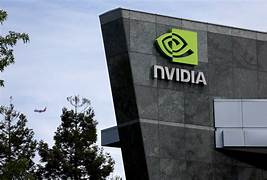
China’s Nvidia Rival Cambricon Soars on 4,000% Revenue Surge, Boosting $40 Billion Rally

 :
| Updated On: 27-Aug-2025 @ 6:46 pm
:
| Updated On: 27-Aug-2025 @ 6:46 pmSHARE
Chinese semiconductor firm Cambricon has reported record profits in the first half of the year, reflecting the growing momentum of local rivals to Nvidia as China focuses on strengthening its domestic semiconductor industry. Cambricon, along with a growing number of Chinese technology companies, aims to provide alternatives to American chip giant Nvidia, particularly in supplying processors required for artificial intelligence (AI) applications and model training. This push aligns with China’s strategic goal of reducing reliance on foreign technology amid escalating U.S.-China trade tensions and export restrictions.
For the first half of the year, Cambricon announced that its revenue surged over 4,000% year-on-year, reaching 2.88 billion Chinese yuan ($402.7 million), while net profit rose to a record 1.04 billion yuan. Despite the impressive growth, the scale remains small compared to Nvidia, which reported $44 billion in revenue during its February-to-April quarter. Nvidia is set to release its fiscal second-quarter earnings soon. Nevertheless, Cambricon’s performance illustrates the rising capabilities of Chinese AI chip makers and their ambition to develop domestic alternatives in response to potential supply disruptions from U.S. technology.
Earlier this year, Nvidia was blocked from exporting its pared-down H20 chip to China. Although the company has since resumed exports under new regulations, it must remit 15% of the revenue generated from sales in China to the U.S. government. Simultaneously, Beijing has reportedly discouraged local firms from purchasing Nvidia’s H20 chips, incentivizing the adoption of domestic solutions. As a result, companies like Cambricon have benefited from a growing demand for local semiconductors while integrating limited Nvidia hardware where possible.
Cambricon’s market capitalization has more than doubled this year, adding over $40 billion, bringing its total valuation to approximately $80 billion, according to S&P Capital IQ. This surge reflects investor confidence in the company’s growth potential and the broader Chinese semiconductor sector. Alongside hardware development, Cambricon is also focusing on enhancing its software ecosystem and developing next-generation AI chips, recognizing that Nvidia’s competitive advantage extends beyond hardware to software familiarity among developers.
However, Chinese AI chip makers, including Cambricon, face significant challenges. Their technology still lags behind Nvidia’s, particularly in processing power and efficiency. Export controls and restricted access to advanced chipmaking technologies continue to hamper the development of China’s domestic AI chip capabilities. These limitations pose long-term challenges, as local firms must bridge significant technological gaps while navigating regulatory and trade constraints.
To overcome these challenges, Chinese semiconductor companies are diversifying their product lines and investing heavily in research and development. They are exploring new applications for AI chips, expanding international partnerships, and building stronger software frameworks to compete with Nvidia’s well-established ecosystem. Cambricon’s rapid revenue growth, strategic positioning, and efforts to develop next-generation hardware indicate a determined approach to closing the technological gap and reducing China’s dependency on foreign AI chip technology.
Overall, while Cambricon’s record profit and market capitalization gains underscore the potential of China’s domestic AI chip industry, the path forward remains challenging. Success will require continued innovation, robust software integration, and overcoming technological bottlenecks imposed by export restrictions. Despite these hurdles, Cambricon’s rise signals a broader trend: Chinese firms are increasingly positioning themselves as credible alternatives to U.S. chipmakers, reflecting Beijing’s strategic emphasis on self-reliance and domestic innovation in the semiconductor sector.